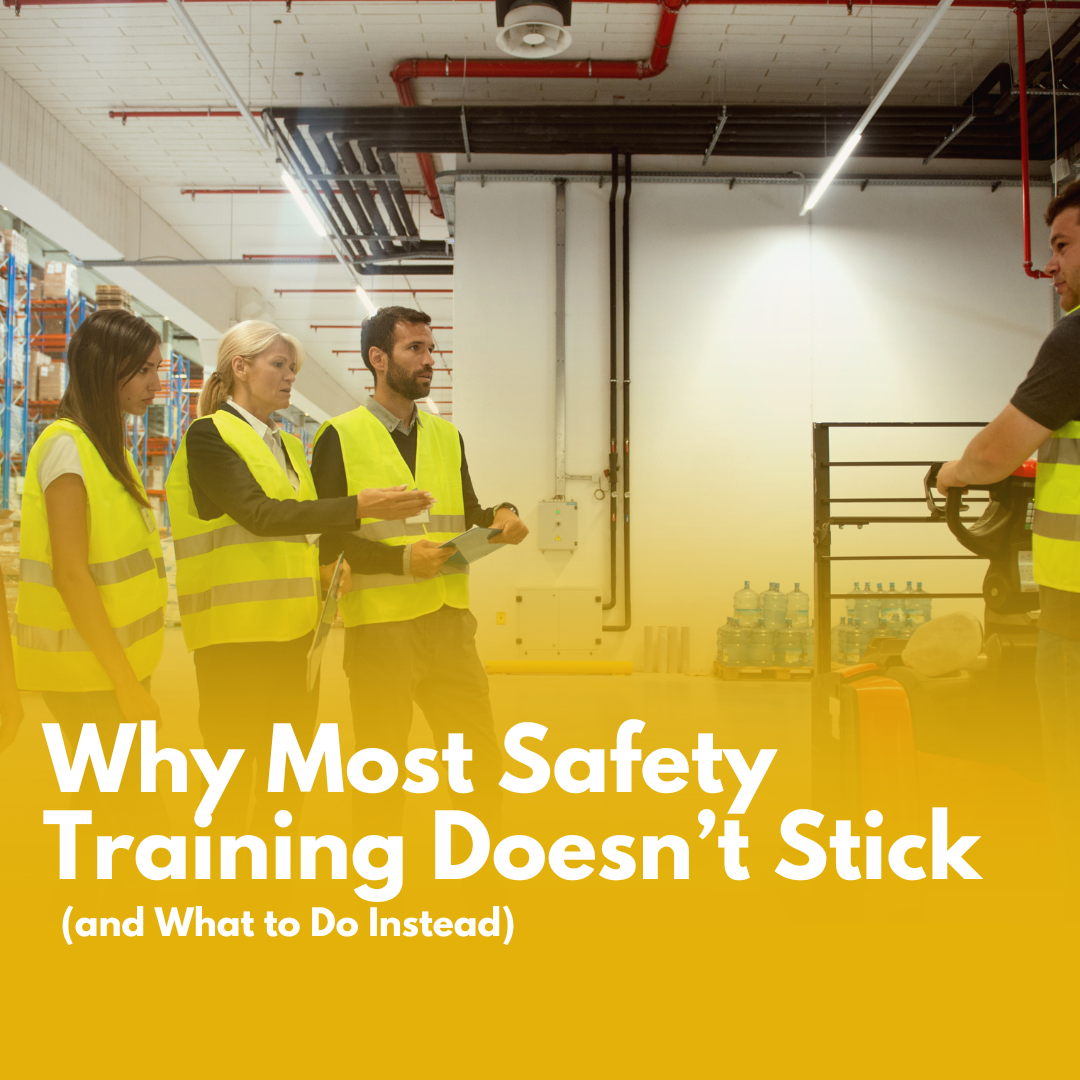Why Most Safety Training Doesn’t Stick (and What to Do Instead)
Safety training is one of the most common investments companies make in protecting their workers. But here’s the reality: most safety training fails to change behavior.
Employees sit through a course, maybe answer a few questions, sign a form and then go back to doing things the same way they always have. The problem isn’t that safety training is unimportant. It’s that most of it is designed to check boxes, not build habits.
If you want safety training that actually sticks, here’s what you need to know and how to fix it.
The Real Reasons Traditional Safety Training Fails
1. It’s Too Generic
Many safety trainings are one-size-fits-all. They rely on cookie-cutter slides or outdated videos that don’t reflect the actual work employees are doing.
Why that doesn’t work:
People tune out when they can’t relate. If a forklift operator is sitting through a general office safety video, you’ve lost them from the start.
2. It’s Passive, Not Engaging
Lectures, long PowerPoints, and written tests dominate most training sessions. But safety isn’t just knowledge it’s muscle memory, decision-making, and judgment.
Why that doesn’t work:
We retain far less from passive instruction than from active learning. If someone can’t show you how to do the job safely, then they haven’t really learned it.
3. It’s Treated as a One-Time Event
Many companies do safety training during onboarding or once a year during “safety week.” After that, it’s out of sight, out of mind.
Why that doesn’t work:
Safety isn’t something people learn once and remember forever. Without repetition, reinforcement, and real-world application, the information fades fast.
4. It Ignores the Why
Training often explains what to do but not why it matters. Employees are told the rules, but not the real-life consequences of ignoring them or the impact of doing things right.
Why that doesn’t work:
Adults learn best when they understand the purpose behind the instruction. If workers think the training is just for compliance, they won’t connect with it on a deeper level.
What Effective Safety Training Looks Like
To create training that actually drives safe behavior, it needs to go beyond information sharing. Here’s what works:
Make It Job-Specific
Design your training around the tasks, equipment, and environment your team works in. Use real examples from their daily routines, not generic industry templates.
For example, instead of a general ladder safety video, walk them through your warehouse with your ladders and equipment.
Use Hands-On Learning
Wherever possible, have employees demonstrate skills, role-play scenarios, or walk through procedures in the actual workspace.
Muscle memory is powerful. When someone physically practices a lockout-tagout procedure or dons a harness, they’re far more likely to retain the steps.
Train in Short, Regular Intervals
Break up training into smaller sessions over time instead of relying on long annual refreshers. Reinforce key concepts through quick toolbox talks, weekly huddles, or microlearning modules.
Repetition improves retention. And short bursts of learning are easier to absorb especially when the workday is busy.
Explain the Real-World “Why”
Use stories, photos, or case studies to show the real consequences of unsafe practices—and the impact of doing things right.
A five-minute discussion about how a near-miss happened in your facility is often more powerful than a 20-slide deck on regulations.
Encourage Participation and Feedback
Training should be two-way. Ask employees what safety challenges they’ve faced. Let them talk through how they’d handle a tough situation. Create space for dialogue, not just delivery.
When people feel heard, they’re more likely to apply what they learn and speak up in the future.
Bonus Tip: Train Your Supervisors to Reinforce Learning
Even great training can fade if it’s not supported on the floor. Your frontline supervisors play a huge role in making sure safety habits stick. That means they need coaching too, on how to observe behavior, give constructive feedback, and set the tone for safety every day.
Conclusion: Better Training Means Safer Behavior
You can’t build a strong safety culture on weak training. If your current program is all talk and no traction, it’s time to rethink how you deliver it.
Training that sticks is:
Focused on the real tasks people perform
Engaging and interactive
Frequent and consistent
Connected to personal responsibility
Reinforced daily by leadership
At Nano Safety & Security, we specialize in designing safety training that changes behavior—not just completes a requirement. Whether you need help revamping your program or developing training from scratch, we’ll make sure your people walk away confident, capable, and committed.
Let’s make safety real, not just regulatory.


